Mars is usually a safe 225 million kilometers away from Earth, but what if the red planet went off course and headed straight toward us? This nightmare scenario would cause devastation long before the planets actually collided.
The gravitational pull, geological upheaval, and violent atmospheric changes would make survival almost impossible. The final impact would completely reshape our world and could even create a new celestial body. Humanity would be facing an event on a scale that has not occurred in billions of years, and the outcome would change the Solar System forever. Here are six stages of what might unfold.
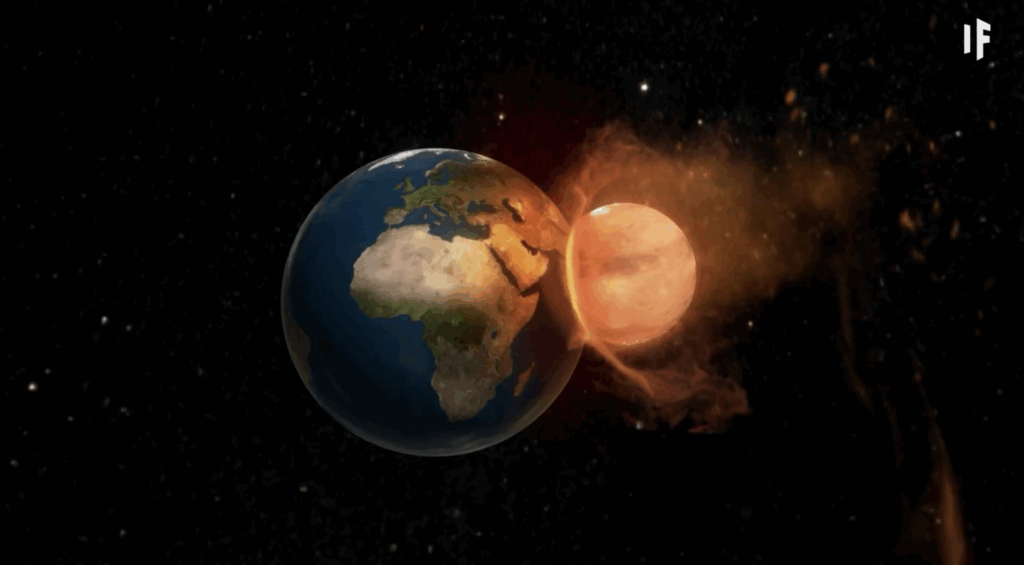
1. Fifteen Days Before Impact: The First Signs of Disaster
Two weeks before the collision, Mars would already appear in the sky as a small red moon. At a distance of just 4 million kilometers, its gravitational pull would begin to distort Earth’s crust and cause the oceans to rise in dangerous ways. Coastal cities would begin experiencing unusually high tides, and low-lying areas would flood even before the first wave of destruction arrived.
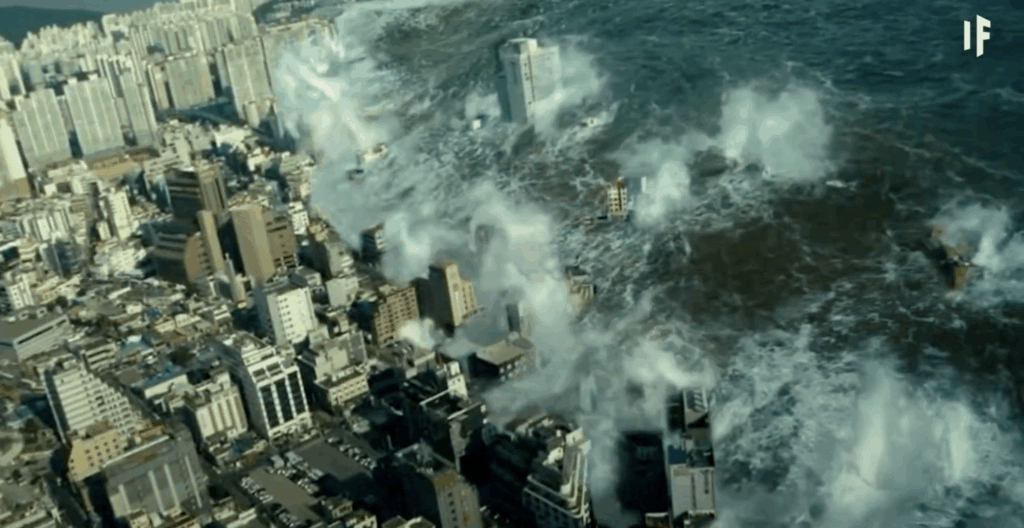
Much like the Moon influences tides, but with far more intensity, Mars would pull enormous amounts of water toward it, triggering powerful tsunamis. The planet’s approach would also begin to put stress on tectonic plates, creating small tremors that serve as warnings of the greater destruction to come. Even at this stage, millions of people might already be displaced from their homes.
2. Three Days Before Impact: Global Chaos
When Mars reached 800,000 kilometers away, twice the distance of the Moon, its effects on Earth would be catastrophic. Tides could surge to heights of 60 to 100 meters, submerging coastal cities like Miami, Venice, and Bangkok completely underwater.
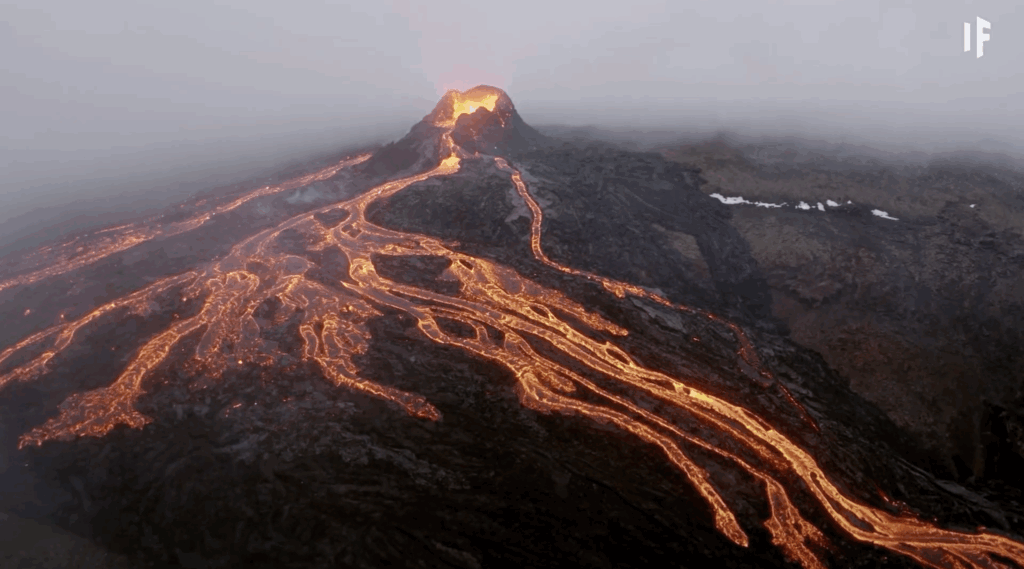
The stress on Earth’s crust would cause tectonic plates to grind and shift violently, leading to unprecedented earthquakes and volcanic eruptions. Rivers of lava would consume landscapes, while massive ash clouds would darken the sky. Infrastructure would collapse rapidly, cutting off power, clean water, and communications. Panic would spread as people attempted to evacuate disaster zones, though safe places would be nearly impossible to find. Global governments would be powerless to prevent the chaos from escalating.
3. The Final Hours: Mars Begins to Break Apart
At a distance of only 10,000 kilometers, the gravitational struggle between Earth and Mars would intensify to its breaking point. Earth’s greater mass would begin to tear Mars apart, creating massive cracks on its surface.
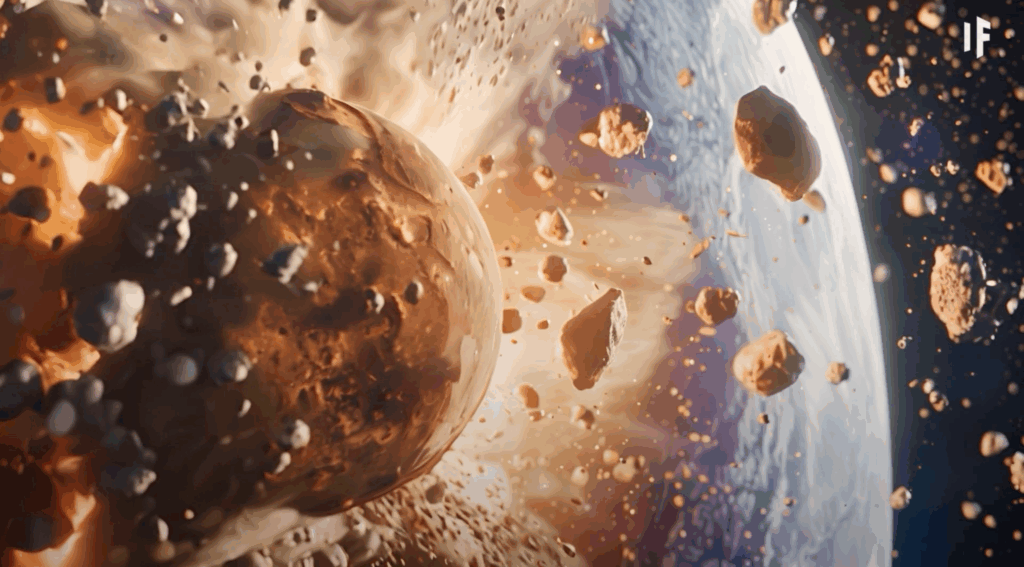
However, because Mars would be traveling at speeds of around 10 kilometers per second, there would not be enough time for it to completely disintegrate before impact. Large fragments of the planet could break off, but most of it would still slam into Earth. The combined gravitational forces would also be distorting Earth’s shape, creating bulges in the crust and causing massive volcanic activity. This final approach would be marked by near-constant earthquakes and an atmosphere filled with ash and dust.
4. Twenty Seconds Before Impact: The Sky Turns Red
In the final seconds, Mars would dominate the sky, appearing as a massive red disk overhead. Its gravity would cause unusual effects on Earth’s surface, making people near the impact zone 30 percent lighter and those on the opposite side about 3 percent lighter.
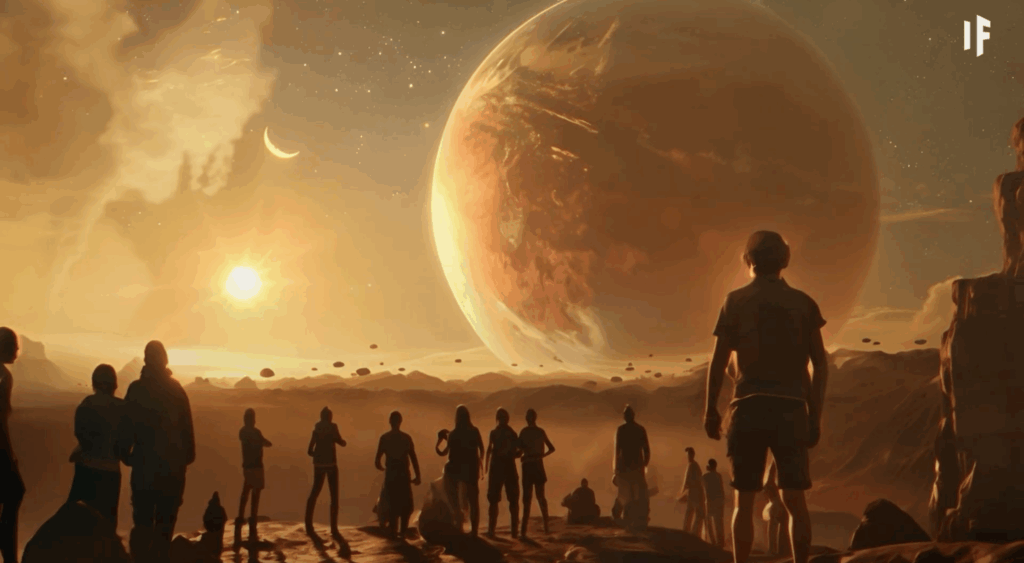
A colossal shock wave would tear through the atmosphere, making breathing extremely difficult and sending hurricane-force winds across the globe. Cracks in the Earth’s crust would widen into deep canyons, while the largest earthquakes in history would destroy cities in seconds. The ground would buckle beneath entire regions, swallowing buildings and infrastructure. For anyone still alive on the surface, this would be the last moment before complete annihilation.
5. The Moment of Impact: Instant Extinction
When Mars made contact with Earth, the collision would release as much energy as billions of nuclear bombs detonating simultaneously. The impact would liquefy both planets’ outer layers, sending molten rock and metal into the atmosphere.
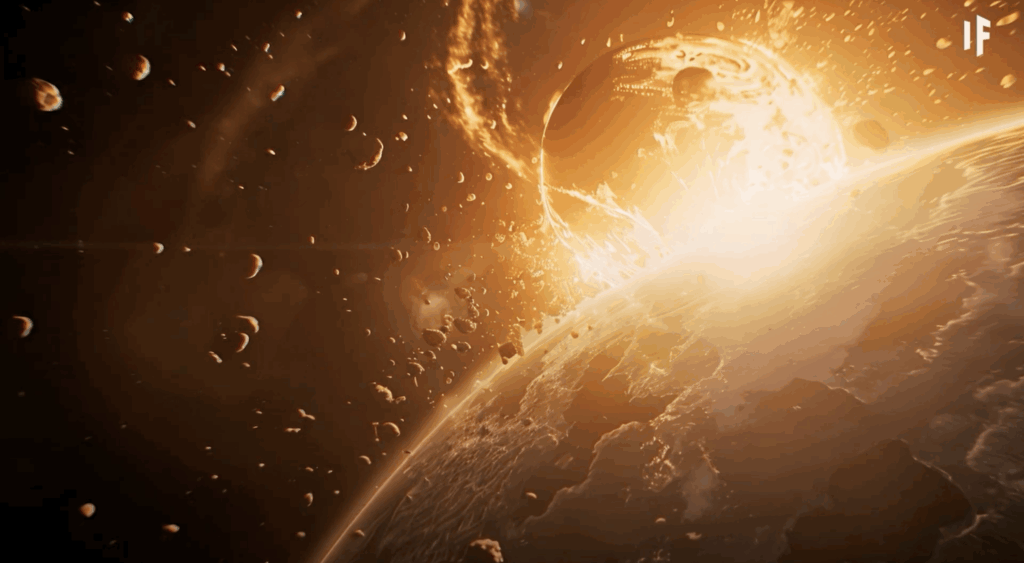
Massive pieces of Mars’s core would fuse with Earth’s, altering the planet’s internal structure. Molten debris would rain back down, igniting global firestorms. Some fragments would be flung into space, creating a ring of debris around Earth, while others would smash into the Moon or hurtle toward nearby planets. Within minutes, all life on the surface would be vaporized, and the oceans would boil away.
6. Aftermath: A New but Lifeless Earth
In the aftermath, Earth would be heavier, having absorbed part of Mars’s mass. The surface would be a molten wasteland, with no atmosphere and no liquid water. Without these essentials, life would not return anytime soon. Over millions of years, impacts from comets might deliver water and organic materials, slowly setting the stage for new life to emerge.
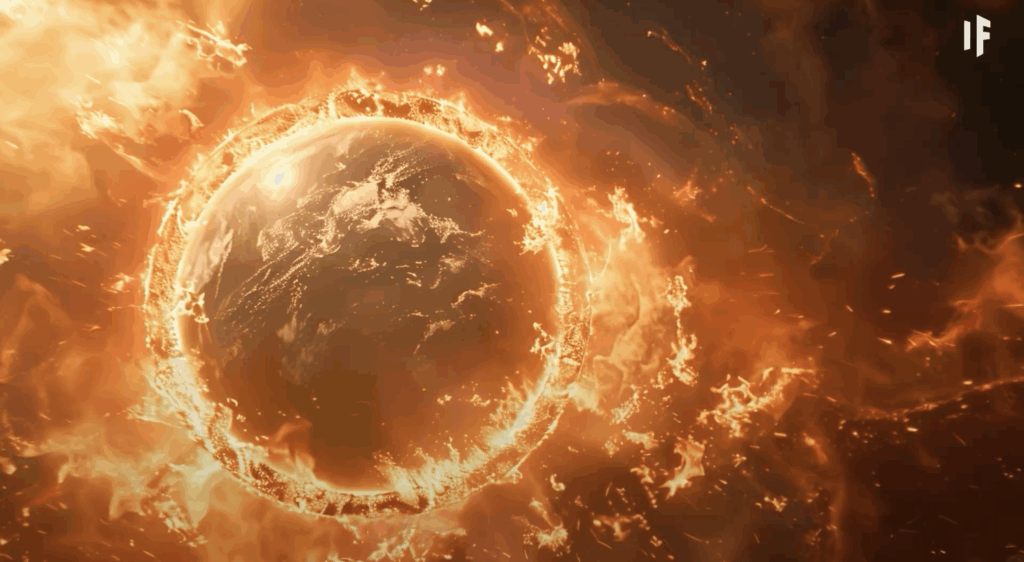
However, the Sun’s gradual heating over the next billion years would likely strip away much of that water before anything could fully develop. If life did return, it would evolve in a completely alien environment, shaped by the fusion of two once separate planets. The familiar blue Earth would be gone forever, replaced by a hostile new world.



























